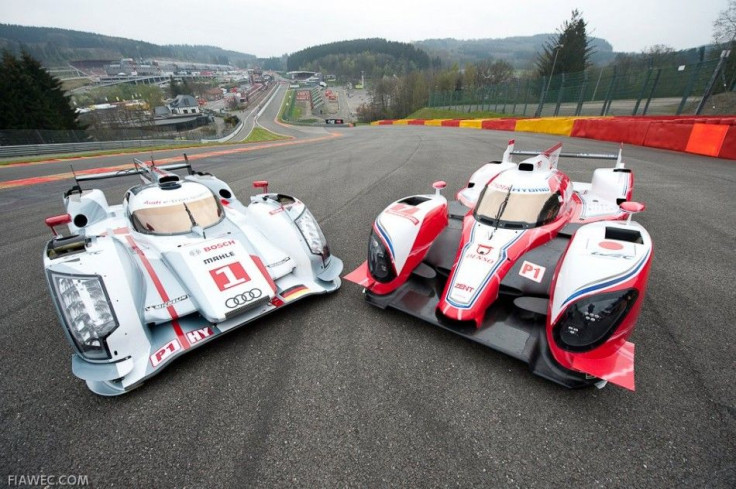
In two week's time, the 80th 24 Hours of Le Mans will unfold a whole new chapter in motor racing as premiere LMP1 class competitors Audi and Toyota both field hybrid prototypes race cars in a bid for Le Mans glory.
To regulate the use of the new technology in its introduction to the historic race, governing body Automobile Club de l'Ouest (ACO) and Federation Internationale de l'Automobile (FIA) imposed a joint ruling intended to limit the size and budgets of hybrid systems by capping the maximum energy transmitted between two braking phases at no more than 500 kilojoules. Secondly, the ACO also appointed specific "hybrid transmission zones" that permit the deployment of hybrid energy, restricting the hybrid LMP1 teams from abusing power gains throughout the racetrack.
Earlier in the FIA World Endurance Championship season, the ACO had already implemented a similar 5-zone regulation at the 6 Hours of Spa-Francochamps, where LMP1 class hybrid energy was used for the first time. In total, the longer 8.469 mile Le Man's Circuit de la Sarthe will designate seven zones.
Having identified the zones where braking is particularly heavy, the ACO and FIA designate the entry to each zone as 50 meters before the corner in question. The first zone is at the Dunlop chicane located shortly after the start/finish straight. Next, the second zone will be the Forza Motorsport chicane, located one-third of the way through the long Mulsanne straight. Michelin chicane is the third zone, this time two-thirds of the way on Mulsanne straight. The fourth zone begins at Mulsanne corner, where the Mulsanne straight ends. The fifth zone is at Indianapolis corner, a popular overtaking opportunity for many race cars. The sixth zone is Porsche corner and the final zone is at Ford corner, right before the pit entry and the start/finish straight.
Ahead of the official June 16-17 main 24 Hours of Le Mans event, the Audi R18 e-tron quattro and Toyota TS030 Hybrid LMP1 prototypes will both field in this weekend's test day to complete a couple lap under these regulations. While both teams are adopting hybrid energy, Toyota and Audi approach the system in different ways. In both, energy is recovered from the forces under braking. However, the Audi R18 e-tron quattro feeds its energy through to the front wheels when the car is traveling at speeds beyond 120 km/h. As for Toyota, energy can be delivered to the rear wheels at any speed the team desires.
This weekend's test days should prove exciting, as this will be the first time the teams will get to test the new vehicle hardware on the legendary French circuit. Stay tuned for more as weekend testing unfolds.




